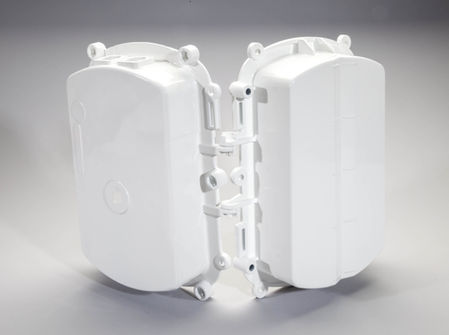Die Casting

What is Die Casting?
Die casting is a metalworking process in which molten metal is forced into a mold cavity under high pressure. Die casting is an efficient, economical way to manufacture complex metal parts at scale. The most common metals used in die casting are non-ferrous alloys like Aluminum, Zinc, and Magnesium.
Nearly 200 years old, die casting is a proven process that produces more castings than any other casting method. A Steel mold or “die” is used to achieve as many design features as possible during casting. Parts can be machined after casting for tight-tolerance dimensions and finished with a variety of coating options. By casting standards, die casting offers very good surface finish and dimensional consistency.
How Does Die Casting Work?
Traditional die casting occurs in four steps:
1. Die Preparation
The die is prepared by spraying the mold cavity with lubricant. The lubricant helps control die temperature and assists in the removal of the casting.
2. Filling
The die is held closed while molten metal is injected into the cavity under high pressure — between 1,500 and 25,000 psi. Once the die cavity is filled, the pressure is maintained until the casting solidifies.
3. Ejection
The die is opened and the “shot” is ejected by ejector pins. A shot can contain one or multiple castings, depending on how many cavities are in the die.
4. Shakeout
Finally, the shakeout involves separating the scrap from the shot — including the gate, runners, sprues and flash. The scrap metal is remelted and recycled.
The high-pressure injection fills the die quickly to ensure that the entire cavity fills before any part of the casting solidifies. In this way, continuity is achieved throughout the shot, even if a shape has thin sections that are difficult to fill.
The result is accurate metal parts with more intricate designs than those created by other casting processes. To produce non-castable features, die casters perform secondary operations such as tapping holes, polishing, plating, buffing, and painting.


Advantages of Die Casting
Die casting offers many advantages, some of which include:
Excellent dimensional accuracy
Smooth cast surfaces
Thinner walls than other casting processes
Cast-in inserts — e.g. threaded inserts, heating elements, and high strength bearing surfaces
Reduces or eliminates secondary machining operations
Rapid production rates
High casting tensile strength
Slower corrosion rates than other types of castings due to smoother surface finish
Die Casting Materials
Below is a list of the main die casting alloys and their advantages:
Aluminum: Lightweight; high dimensional stability for very complex shapes and thin walls; good corrosion resistance; good mechanical properties; high thermal and electrical conductivity; retains strength at high temperatures
Zinc: The easiest metal to cast; high ductility; high impact strength; easily plated; economical for small parts; promotes long die life
Magnesium: The easiest metal to machine; excellent strength-to-weight ratio; lightest alloy commonly die cast
Copper: High hardness; high corrosion resistance; highest mechanical properties of die cast alloys; excellent wear resistance; excellent dimensional stability; strength approaching that of Steel parts
Lead and Tin: High density; extremely close dimensional accuracy; used for special forms of corrosion resistance
Silicon Tombac: High-strength alloy made of Copper, Zinc and Silicon. Often used as an alternative for investment cast Steel parts

Die Casting Applications
Die casting is used in a wide range of industries and products. Some examples include:
Defense: firearms, communications equipment, vehicles, mobility systems, avionics
Industrial: bearing housings, compressors, pumps, heatsinks, handheld enclosures
Medical: pumps, centrifuges, surgical robots, monitors, operating instruments, hospital beds
Technology: RF filters, antenna mounts, front face plates, rugged housings, light fixtures, end caps, heatsinks
Transportation: cylinders, chassis, decorative parts, EV battery housings
.png)





























